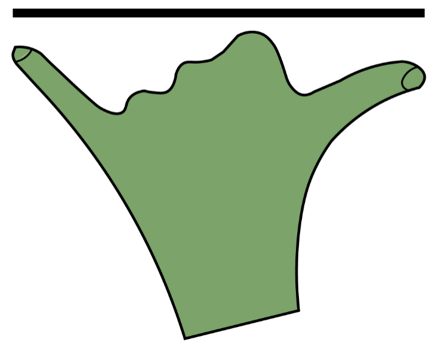About Unit Conversion
Unit conversion is a multi-step procedure involving numerical factor multiplication or division. Weight, distance, and temperature can all be measured in different ways. Distance is measured in kilometres, weight in kilos, and temperature in degrees Celsius in numerous nations. Get the List of all Maths formulas in one place.
Unit conversion is a multi-step procedure that requires multiplying or dividing a numerical factor or, more specifically, a conversion factor. The method may also require rounding and selecting the correct number of significant digits. Different conversion units are used to measure various properties.
- Measuring Length
- Measuring Weight
- Measuring Capacity
- Measuring Temperature
To comprehend better, we convert units of measurement in mathematics. To make it easier to understand, the length of a table is measured in inches, whereas the length of a garden is measured in yards. The length of a finger cannot be measured in kilometres. Units of measurement are required to measure various quantities. Unit conversion is used to address a variety of mathematical problems. For example, if the length of a rectangle is supplied in inches but the width is given in feet, we must convert the units to make them uniform before calculating the perimeter. As a result, understanding unit conversion is essential.
Definition of Conversion of Units
By definition, conversion of units refers to the process of multiplying or dividing between different units and measurements of the same quantity. Conversion is the process of transforming the value of one form into another, such as inches to millimetres or litres to gallons in mathematics. To measure length, weight, capacity, temperature, and speed, units are used.
Conversion of Units Measurements
- Length
- Temperature
- Area
- Volume
- Weight
| Quantity | Unit |
| Length | feet (ft), yards (yd), miles, inch (in), |
| Temperature | Fahrenheit (F), Celsius (C), Kelvin (K) |
| Area | Square Feet, Acre, Square Yard, Square Mile, Square Inch |
| Volume (Capacity) | Fahrenheit (F), Celsius (C), Kelvin (K) |
| Weight (Mass) | Pounds (lb), Tons, Ounces |
In the early years of learning, non-standard units of measurement are used to expose children to the notion of measuring without requiring them to read scales. Because reading scales of any kind is a challenging ability in and of itself, the goal of non-standard measures is to get the kid to focus on the concepts of heavier, lighter, longer, shorter, and so on before moving on to standard units.
Hand spans are a non-standard measurement used to determine the length of items. Using a handspan to measure objects is a casual method of determining lengths. Due to the subjectivity involved, the measurements may differ.

A unit conversion table demonstrating the relationship between several units is provided below.
| Quantity | Relationship |
| Length | 1760 yards = 5280 feet = 63,360 inches =1 mile |
| Temperature | F-32/9=K-273/5= C/5 |
| Volume (Capacity) | 4 quarts = 8 pints = 128 fluid ounces=1 gallon |
| Weight (Mass) | 2000 pounds = 32,000 ounces=1 ton |
Unit Conversion Charts
Unit Conversion Charts contain conversion factors for converting different units of length, area, volume, temperature, and other variables, as well as serving as a reference for rapid computations. The charts can also be used as a unit conversion formula, allowing you to convert any quantity from one unit to another. Take a look at the table below for unit conversions:
Length Unit Conversions
| 1 millimetre | 0.001 meter |
| 1 centimetre | 0.01 meter |
| 1 decimeter | 0.1 meter |
| 1 decameter | 10 meters |
| 1 hectometer | 100 meters |
| 1 kilometre | 1000 meters |
| 1 inch | 2.54 x 10-2 meters |
| 1 foot | 0.3048 meters/ 12 inches |
| 1 yard | 0.9144 meters/ 3feet |
| 1 mile | 1.609344 kilometers/ 1760 yards/ 5280 feet/ 63,360 inches |
Area Unit Conversions
| 1 sq. inch | 6.4516x10-4 sq. meters |
| 1 sq. foot | 9.2903x10-2 sq. meters |
| 1 acre | 4.0468x103 sq. meters |
| 1 hectare | 1x104 sq. meters |
| 1 sq. mile | 2.5888x106 sq. meters |
| 1 barn | 1x10-28 square meters |
Temperature Unit Conversions
| C/5 = F-32/9 = K-273/5 |
Volume Unit Conversions
| 1 millilitre | 0.001 litre |
| 1 centilitre | 0.01 litre |
| 1 deciliter | 0.1 liter |
| 1 decaliter | 10 liters |
| 1 hectoliter | 100 litres |
| 1 kiloliter | 1000 litres |
| 1 cubic inch | 1.639x10-2 liters |
| 1 pint | 473.16 milliliters/ 0.57 liters |
| 1 quart | 946.353 milliliters/ 0.946353 liters/ 2 pints |
| 1 gallon | 3.785 liters/ 4 quarts/ 8 pints/ 128 fluid ounces |
| 1 cubic foot | 28.316 litres |
Mass Unit Conversions
| 1 milligram | 0.001 grams |
| 1 centigram | 0.01 grams |
| 1 decigram | 0.1 grams |
| 1 decagram | 10 grams |
| 1 ounce | 28.3495 grams |
| 1 hectagram | 100 grams |
| 1 kilogram | 1000 grams |
| 1 stone | 6350.29 grams |
| 1 pound | 453.592 grams/ 0.453592kg/ 16 ounces |
| 1 ton | 907.185kg/ 2000 pounds/ 32,000 ounces |
Conversion Factors
A conversion factor is a value or number that is multiplied or divided to convert one set of units to another. The calculation is simple and quick with the right conversion factor. For example, 12 inches = 1 foot when converting inches to feet, and C/5=F-32/9=K-273/5 when converting temperatures.